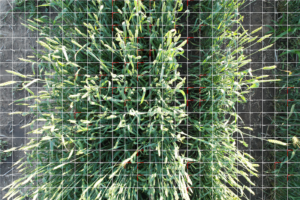By Zhiwu Zhang & Xianming Chen
You bring your smartphone wherever you go. Next time when you bring it to your fields, you may use it to detect stripe rust, especially during the disease’s early stages when rust is not easy to spot.
Stripe rust is a polycyclic disease with numerous infections occurring during a growing season. Wind can spread rust spores for thousands of miles, and spores can infect any above-ground plant part throughout all growth stages whenever the plants are susceptible and weather conditions are favorable (relatively warm and wet in the early season and cool and wet in the late season) for infection. Therefore, the pathogen is capable of causing large-scale epidemics and has the potential to cause 100 percent yield losses on highly susceptible varieties under high disease pressure.
The development of resistant varieties and the application of fungicides when necessary are major approaches to controlling stripe rust. When a fungicide application is needed, timing is critical for the application. If the application is too early, the fungicide cannot protect the crop from late infections; if the application is too late, it will not effectively prevent rust damage.
Currently, timely decision-making to apply fungicides requires growers and plant pathologists to visually scout the fields and monitor pathogen presence. This process is laborious and time-consuming. More importantly, stripe rust can easily hide from human eyes at early stages when the infection rate is low.
This is where your smartphone can help. The images and videos from a smartphone can be viewed again and again to determine if there are leaves infected by stripe rust. The challenge is the examination also takes time and requires full attention. With funding from the Washington Grain Commission and the Washington Wheat Foundation, we have been collaboratively working together to teach computers to do the examination using artificial intelligence.
 As a result, the software, ROOSTER, is released to growers at https://zzlab.net/Rooster. We divide a smartphone image into hundreds of small tile images. We trained ROOSTER with tens of thousands of tile images containing stripe rust and hundreds of thousands of tile images containing no stripe rust. Currently, we have achieved 70 percent accuracy for both sensitivity and specificity.
As a result, the software, ROOSTER, is released to growers at https://zzlab.net/Rooster. We divide a smartphone image into hundreds of small tile images. We trained ROOSTER with tens of thousands of tile images containing stripe rust and hundreds of thousands of tile images containing no stripe rust. Currently, we have achieved 70 percent accuracy for both sensitivity and specificity.
Such artificial intelligence technologies have been successfully used in many areas, like human disease diagnosis, automatic driving and online shopping, to assist customers to find the products they may need. The essential element of the technologies is the neural network model initiated by Walter Pitts and Warren McCulloch in 1943. Each neuron can sum the signals from the neurons from previous layers and has its own threshold to report the summation or not to the neurons in the next layers.
In 1989, mathematician George Cybenko confirmed that a neural network can approximate any relationship between input and output with sufficient neurons. The theorem did not get impactful implementations until the recent development of GPU (graphics processing unit) computation which can handle many more neurons than CPUs (central processing units).
Drone technologies can also be integrated into the system at an affordable cost. For example, this year, DJI released two models under $1,500: Air 2S and FPV. These drones can take images several feet above plants. The drone images have 20 million pixels, which are about twice as many as a regular smartphone. The drones can also carry additional cameras such as GoPro (under $500) to collect additional images or videos.
We are still in the process of improving accuracy. You can help us serve you better by sending your images, especially the ones with only a few infected leaves, to us by email at Zhiwu Zhang and Xianming Chen.
This article originally appeared in the February 2022 issue of Wheat Life Magazine.

Zhiwu Zhang, Ph.D.
Zhiwu Zhang is an associate professor and holds the Distinguished Professorship for Statistical Genomics, funded by the Washington Grain Commission, at Washington State University. His research interests include phenotyping by using hyperspectral images and remote sensing images from satellites and drones. He also works on innovative statistical methods and computing tools for gene mapping and genomic selection, along with integration of high throughput genotyping, statistics, and machine learning to solve problems in plant breeding. Read more about Dr. Zhang.

Xianming Chen, Ph.D.
Xianming Chen is a research plant pathologist with the USDA-ARS and an adjunct professor at Washington State University. His research interests include foliar diseases of wheat and barley, especially rusts. He also works on epidemiology and control of rusts, including cultural, chemical, and disease resistance. His work contributes to the development of models for predicting rust epidemics. Read more about Dr. Chen.
